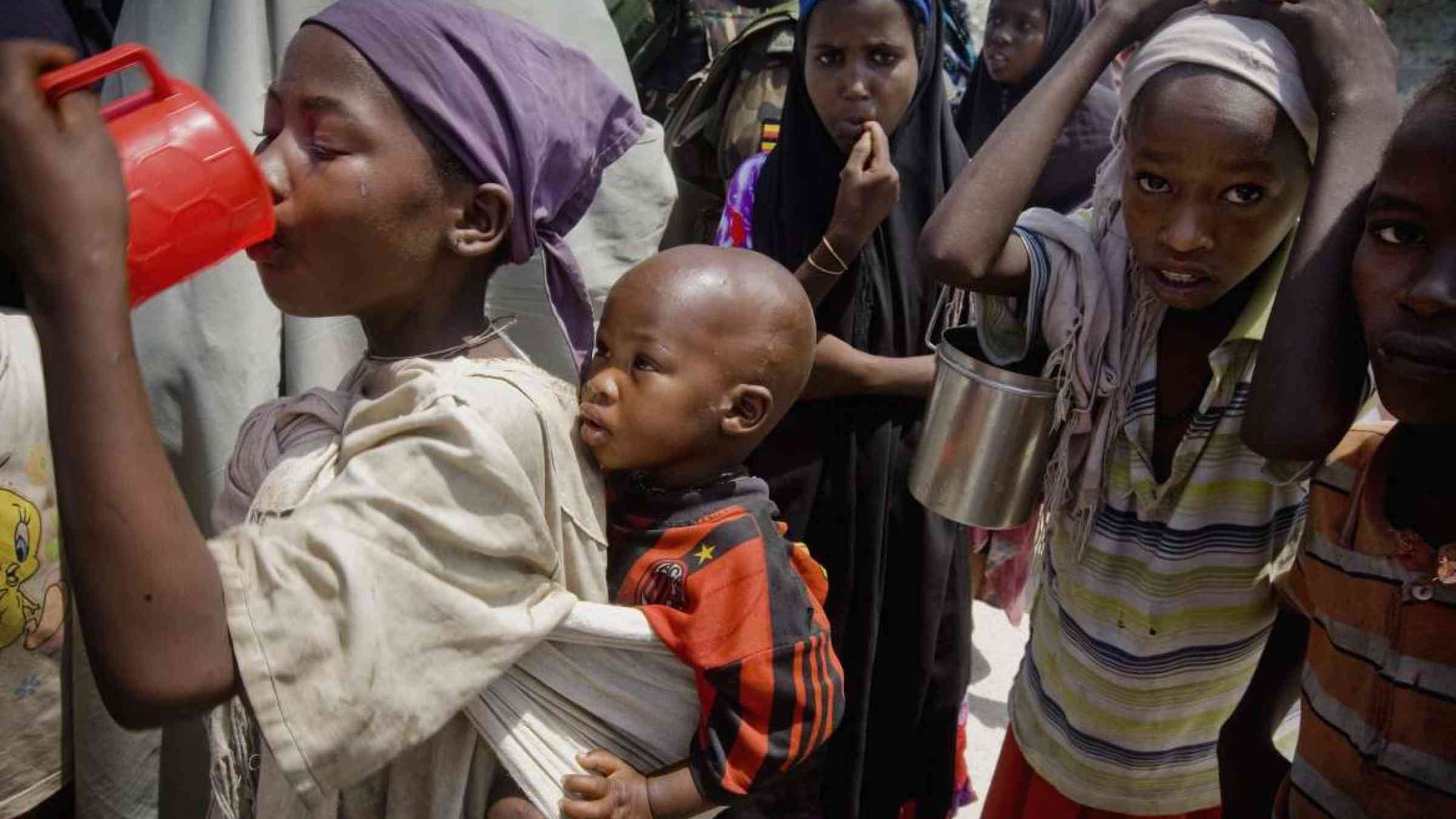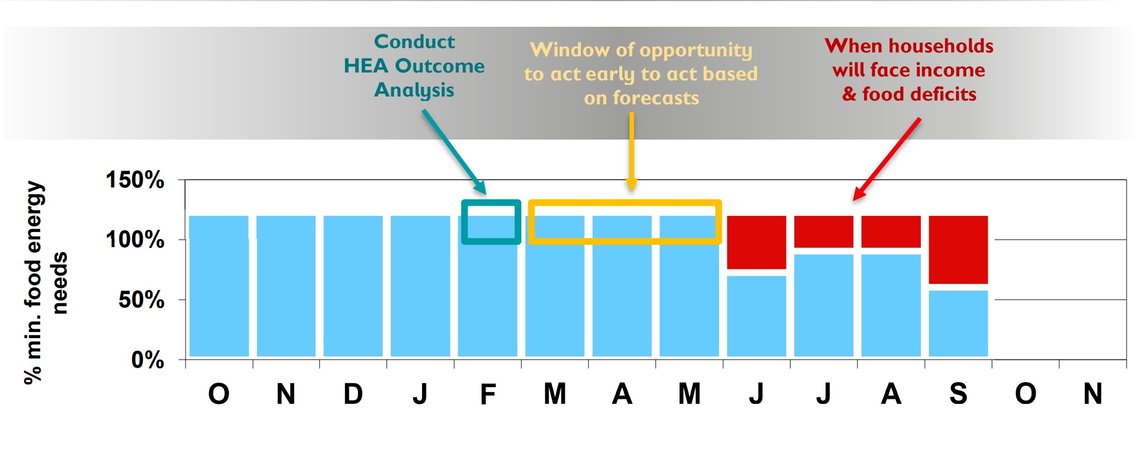Protecting children through anticipatory action based on Household Economy Analysis

Save the Children’s recent report, ‘Born into the climate crisis’, highlights that, compared to a person born in 1960, a child born in 2020 will, on average, experience 2.8 times the exposure to crop failure. And the effects of the climate crisis on food security are already being felt: in 2019, a succession of failed rainy seasons meant that nearly 13 million people across the Horn of Africa faced critical levels of hunger. Globally, food crises – many of which are predictable – are on the rise, and humanitarian systems and funding are stretched beyond capacity.
With the effects of climate change becoming more severe, it’s crucial to predict future crises and act beforehand. Anticipatory action is already considered by many actors as the best and most cost-effective way to mitigate the impacts of crises, and to reduce the number of people requiring emergency assistance. Yet this approach is still the exception, not the norm; funding for crises remains largely reactive and is usually only triggered once lives and livelihoods are being lost on a large scale. This is partly because there is not yet a proven, agreed model for implementing anticipatory action at scale.
Household Economy Analysis: a powerful tool for anticipatory action
Acting on forecasts and achieving true anticipatory action is only possible when an appropriate system is in place. This includes using data and forecasting information, analysing risks and predicting the impacts, for example those on food security, livelihoods and children’s well-being. Household Economy Analysis is a powerful tool that can help with all of these.
This method was originally created by Save the Children in the 1990s as a tool for early warning, because of its unique ability to quantify and project households’ access to food and income. It tells us if households will have sufficient food and income to meet their needs (food, livelihoods and other needs such as education and health care). It can be used at scale, and for a wide range of shocks and scenarios: if a shock can be forecasted, Household Economy Analysis can model its projected impact.
Furthermore, Household Economy Analysis takes the guesswork out of when and how to act appropriately to mitigate a crisis, as it provides direct answers to decision-makers’ questions. The analysis gives an estimate of the number of people that will need assistance to meet their food and non-food needs, the interventions that could support or protect livelihoods, the total cash required to meet their needs, and the months when it will be needed.
Recently in Ethiopia, Save the Children used Household Economy Analysis to predict how forecast below-normal Gu rains (one of the two main rainy seasons) would impact families’ ability to meet their food and well-being needs in future months. The results told us they would face income and food deficits (known as a survival deficit) starting in May, meaning they would not have enough money to buy healthy food for children or to send them to school, or to pay for any health care needs. The analysis also revealed that this loss of income was largely due to the impact the below-normal rains would have on livestock sales and production, which are important income sources for all types of family in the target area.
Save the Children implemented early actions to protect livestock and incomes, so that families would have enough to eat and maintain their well-being throughout the duration of the shock. At the end of the project, a social cost-benefit analysis determined that for every one pound (GBP) spent on anticipatory action, targeted households received an average of 2.58 pounds in social value when compared to a typical humanitarian response. We largely attribute the success of this project to the use of Household Economic Analysis, which informed the timing and type of intervention implemented, and ensured they were appropriate.

A seasonal calendar
What’s next for Household Economy Analysis and anticipatory action?
Through various pilot projects, including the one in Ethiopia described above, we have learned that Household Economy Analysis is an effective tool for triggering and informing anticipatory action, with benefits that include protecting the well-being of children. And others agree: this method already informs some early warning platforms as their only predictive indicator, including FEWS NET and IPC.
In addition, Anticipation Hub partners the Start Network and Welthungerhilfe use this method to support anticipatory action efforts in Kenya and Madagascar. In both cases, it contributes to identifying the threshold level that triggers early actions, while also supporting the selection of appropriate anticipatory actions. For example, in the first implementation of the early action protocol in north Madagascar, which used a climatological forecast to project future food insecurity, Household Economy Analysis was used to estimate the expected income gap for vulnerable families. It also informed the amount provided through early cash interventions, which were then distributed before food insecurity occurred on a large scale.
However, the data coverage for this method remains low, and its analyses are not always updated regularly. To address this, Save the Children and partners are investing in increasing data availability and technical capacity for Household Economy Analysis in countries prone to climate shocks, including Ethiopia and countries in West Africa and, more recently, in Kenya and Somalia.
Save the Children is also a founding member of the newly established Jameel Observatory for Food Security Early Action, a consortium of partners with complementary capabilities that aims to unite data (including from Household Economy Analysis), science and practice to predict, prepare for and overcome climate-related food security and malnutrition challenges in East Africa. We are currently implementing the observatory’s flagship projects in Kenya and Somalia, within which we are generating evidence of the effectiveness and efficiency of Household Economy Analysis-based anticipatory action.